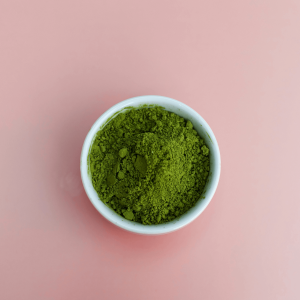Have you ever passed by a smoke shop advertising Kratom? Maybe you’ve asked yourself, what is kratom?
Kratom, derived from the leaves of the Mitragyna speciosa tree in Southeast Asia, is a natural plant with a rich history of traditional medicinal and recreational use.
Our blog post explores all you need to know about kratom, tracing its ancient healing origins to its present-day significance in the Western world. We’re here to offer you a detailed view of kratom – its perks, impacts, and the ongoing conversations around its legality and safety.
Let’s begin!
What is Kratom?
Kratom is classified within the coffee family, sharing some of its stimulating effects. Native to tropical regions of Southeast Asia—primarily Thailand, Malaysia, Indonesia, and Papua New Guinea—the plant thrives in its natural habitat.
The various strains of kratom are often named after their place of origin, such as Maeng Da, Indo, and Bali, each with unique effects and strengths. Physically, kratom leaves are dark green and can grow over 4-6 inches in length and width.
For consumption, the leaves are commonly dried and ground into a powder, which can then be used to make tea or put into capsules. This flexible way of consuming has helped boost its popularity worldwide, catering to both traditional and modern needs.

Historical Uses of Kratom
Kratom has a rich history rooted in the traditions and folk medicine of Southeast Asia, where it’s been a part of life for centuries.
Back in the day, laborers and farmers would chew the leaves for an energy boost during long work hours. It wasn’t just about stamina; it was also a natural remedy for pain relief, anxiety, and various ailments.
In traditional settings, its psychoactive effects were used in ceremonies and healing practices.
As time passed, kratom found its way into Western cultures. Initially met with curiosity, it has now carved out a place in the herbal supplement world, capturing the interest of users drawn to its unique advantages.
How Does Kratom Work?
Kratom’s effects are primarily attributed to its active compounds, mitragynine, and 7-hydroxymitragynine. These alkaloids engage with opioid receptors in the brain, which is a key factor contributing to many of their effects.
Unlike opioids, however, kratom engages these receptors in a way that typically doesn’t produce the same level of dependency or risk of overdose. This interaction can influence mood, providing a sense of well-being or euphoria in users.
It’s also responsible for its analgesic properties, offering pain relief by diminishing the perception of pain signals. Additionally, kratom can affect energy levels, with some strains known for their stimulating effects while others might offer a more sedative experience.
This wide range of effects makes kratom a versatile plant, with different strains catering to varying needs and preferences. Speaking of which…
Types of Kratom Strains: Red, Green, and White Vein Kratom
Kratom strains are primarily sorted by the color of their veins—red, green, and white—each offering unique effects and benefits.
The vein color, visible on the back of the kratom leaf, is determined by the plant’s chemical composition and the maturity level of the leaf at the time of harvest. These varying strains cater to a broad spectrum of needs, making kratom a versatile herbal supplement.
Red Vein Kratom
Red vein kratom is the most popular and widely available strain. Known for its calming effects, it is often used for relaxation and pain relief — kind of like an indica strain of weed.
Red vein strains, like Red Bali and Red Maeng Da, are recommended for individuals dealing with anxiety or looking for a soothing experience. They are also known for their potential to enhance sleep quality.

Green Vein Kratom
Green vein kratom strikes a balance between the sedative effects of red vein and the energizing effects of white vein strains — comparable to a hybrid strain of cannabis.
It is appreciated for its ability to provide energy and focus while also offering mild pain relief. Strains like Green Malay and Green Maeng Da are favored for their versatility, making them a suitable choice for daytime use without the risk of overstimulation.
White Vein Kratom
White vein kratom is celebrated for its stimulating and mood-enhancing properties — similar to a sativa.
It is the preferred choice for individuals seeking a natural boost in energy, concentration, and overall vitality. White Borneo and White Maeng Da are among the most popular kratom strains known for their ability to foster alertness and mental clarity, making them ideal for mornings or when tackling demanding tasks.
As you can see, each of these strains has unique characteristics and effects, catering to different preferences and needs. Whether you’re looking for pain relief, energy, focus, or relaxation, there’s a kratom strain that can meet your requirements.
Benefits of Kratom
Given that kratom offers a range of different strains, it’s no surprise that it also offers a range of benefits tailored to meet the needs of its users.
Here are some of the key advantages you can expect:
- Pain Relief: Kratom’s analgesic properties make it a natural pain reliever, helping to reduce discomfort without the side effects commonly associated with pharmaceutical painkillers. This is primarily due to the presence of alkaloids like mitragynine and 7-hydroxymitragynine, which interact with pain receptors in the brain.
- Anxiety and Depression Management: Many users turn to kratom for its mood-enhancing effects, which can be particularly beneficial for those struggling with anxiety and depression. The calming influence of certain strains, especially red veins, helps promote a more positive mindset and reduce stress levels.
- Energy Enhancement and Focus: White and some green vein kratom strains are known for their stimulating effects. These strains can boost energy levels and enhance focus, making them ideal for individuals seeking to increase productivity or combat fatigue without the jitteriness often associated with caffeine.
Potential Side Effects and Risks of Kratom
While kratom does have its perks, it’s good to know about the possible downsides too. Short-term effects like nausea, itching, dry mouth, and constipation can pop up. Some individuals might even feel a bit woozy or sleepy, which could mess with their daily tasks.
Regarding long-term effects, there is still much being studied! But using it for a long time has been linked to liver and kidney problems, plus mood swings. Even though kratom isn’t as addictive as regular opioids, there’s still a chance of getting hooked and dealing with withdrawal symptoms like muscle aches, crankiness, and trouble sleeping.
Remember to balance the risks with the benefits and talk to a healthcare pro before diving in.
How to Use Kratom Safely
Using kratom safely involves a combination of informed decision-making, awareness, and responsibility.
In the following sections, we’ll discuss crucial aspects such as dosage guidelines, the importance of sourcing high-quality kratom, and provide some tips for first-time users.
Dosage Guidelines
The right dosage of kratom can vary significantly among individuals, depending on factors such as weight, tolerance, and the specific effects desired.
Generally speaking, a dose of 1-5 grams is considered mild and can produce subtle stimulating and mood-enhancing effects. A moderate dose ranges from 5-15 grams, which can provide more pronounced pain relief and sedation.
It’s crucial to start with the lowest possible dose, especially for new users, and gradually increase it to find the most effective and safe amount.
The Importance of Sourcing High-Quality Kratom
The kratom market is largely unregulated, which can lead to variations in the quality, purity, and potency of the product.
To ensure safety and achieve the desired effects, it’s essential to purchase kratom from reputable vendors who provide detailed information about their sourcing and testing practices. High-quality kratom should be free from contaminants, adulterants, and high levels of heavy metals, which can all negatively impact health.
Tips for First-Time Users
If you’re considering trying kratom for the first time, here are a few tips to help you have a positive experience:
- Start Small: Begin with the lowest possible dose to assess how your body reacts to kratom. You can always gradually increase the dose in future sessions.
- Choose the Right Strain: Research the effects of different strains to find one that matches your desired outcome, whether it’s pain relief, energy, or relaxation.
- Monitor and Document: Keep a log of your kratom use, including the strain, dose, and effects experienced. This can help you fine-tune your usage and avoid adverse reactions.
- Stay Hydrated: Kratom can cause dehydration, so be sure to drink plenty of water before, during, and after use.
- Listen to Your Body: If you experience undesirable effects, reconsider the strain, dosage, or kratom use altogether. Health and safety should always come first.
By following these guidelines and approaching kratom use with caution and responsibility, users can better manage the risks and enjoy the potential benefits this plant has to offer.

Conclusion
In conclusion, understanding the nuances of kratom—from its diverse strains and their unique effects to the potential benefits and risks—is crucial for anyone considering its use.
Whether seeking pain relief, mood enhancement, or an energy boost, it’s imperative to approach kratom use with an informed and cautious mindset, prioritizing dosage guidelines, and sourcing quality products.
While the potential of kratom as a natural alternative is promising, it is accompanied by the responsibility of the user to ensure their well-being. Therefore, continuous research and open dialogue about personal experiences with kratom are encouraged, contributing to a broader understanding and safer consumption practices.
Remember, the quest for wellness should always involve careful consideration and respect for one’s health.
Frequently Asked Questions
1. What is Kratom?
Kratom, scientifically known as Mitragyna speciosa, is a tropical tree native to Southeast Asia. Its leaves contain compounds with mind-altering effects and have been used in traditional medicine for centuries to relieve pain, boost energy, and in more recent years, to aid in opioid withdrawal.
2. Is Kratom Addictive?
While kratom products have been used as an aid to overcome addiction due to their opioid-like effects, they, themselves, can be addictive. Users, especially those with a history of substance abuse or opioid use disorder, may develop dependence (similar to that of drug and alcohol dependence) and experience withdrawal symptoms similar to opioid withdrawal, though typically less severe.
3. What are the symptoms of opioid withdrawal?
Symptoms can vary in intensity and may include muscle aches, insomnia, irritability, aggressive mood swings, nausea, and diarrhea. These symptoms can be challenging but are usually not life-threatening.
4. Is Kratom legal?
The legality of kratom varies by country and, in the United States, by state. Some states have banned kratom, while others have regulated its use. It is essential to check the current laws set by the drug enforcement administration in your area before purchasing or using kratom.
5. Is Kratom FDA-approved?
As of now, kratom is not FDA-approved for any medical use. Similar to other psychoactive drugs, the FDA has expressed concerns over its safety and has taken action against companies making unproven health claims about kratom. Users are advised to exercise caution and seek information from reliable sources.

 Rewards
Rewards




